Resources for Contractors
Materials
Salt and deicing chemicals only work in specific temperature ranges. For example, salt (sodium chloride) will not melt ice below 15°F. Below is a chart comparing some common deicers.
Remember: All of these are harmful to the environment.
| Melting Agent | * Lowest Melting Temp | Things to Know |
|---|---|---|
| Urea | 20°F | Promotes algae growth in waterways; over-application can harm plants; slow-acting; relatively pet-safe |
| Sodium Chloride (NaCl) | 15°F | Harmful to plants; harmful to concrete; very corrosive to metal; cheap and abundant |
| Magnesium Chloride (MgCl2) | -10°F | Harmful to plants; harmful to concrete; corrosive to metal; relatively high-cost |
| Potassium Acetate (KAc) | -15°F | Can cause surface slickness; lowers oxygen levels in waterways; biodegradable; relatively high-cost |
| Calcium Chloride (CaCl2) | -20°F | Corrosive to metal; leaver slimy residue; less harmful to concrete |
| Sand | Mo melting | Provides traction only; potential pollutant; can be swept up and reused |
* Refers to pavement temperatures, which may differ from air temperature. |
||
Right Product Right Place
- Use an appropriate amount of salt around buildings and on pavement.
- The salt had to be dissolved to melt ice. If you can see the salt, it is not working.
- Pre-applying salt makes snow removal easier and requires less salt.
- Track where the application occurs
- Check pavement temperature before applying ice melt
Storage
Deicers and ice melt should be tightly sealed and protected from moisture and exposure to direct sunlight. The ideal location would be in a climate-controlled warehouse or shed to prevent the products from reacting to coming in contact with water. Covering deicing materials storage piles reduces loss, as exposed piles slowly dissolve from rain and snow throughout the year and wash into downstream water bodies.
- Stored outside the 100-year floodplain for further protection against flooding and surface water contamination.
- Salt piles should be contained
- Covered
- Inspected regularly
- Unload salt hoppers or keep under cover when salt is in the hopper
Removal Methods
Plow
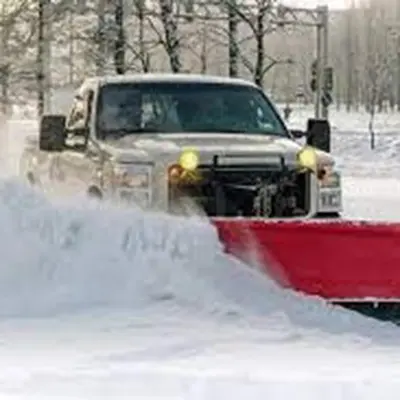
Mechanical removal is always the best approach to winter maintenance. It should always be the preferred approach during and after a snowstorm. The better the mechanical removal, the fewer chemicals are needed.
Brine (Salt + Water)
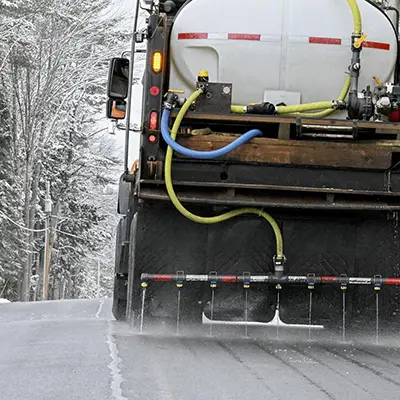
Applying brine before the storm works like putting oil on a skillet before you fry your food. Brine prevents a bond from forming between snow and the pavement, so plow blades can clear the roads more efficiently.
Brushes

Mechanical means of removal is a proven strategy in salt reduction; getting snow off the pavement early and often is a sure way to avoid compaction and icy spots later on.
Prewetting
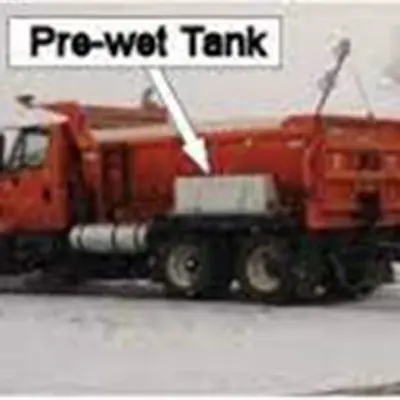
Pre-wetting is spraying salt with a liquid de-icing agent (salt brine) before spreading the salt on the roadway, making it cling to the road instead of bouncing off or being swept off by traffic. This results in less salt being spread, saving money and minimizing environmental impact. It also helps start the melting process by dissolving the salt before spreading, releasing the heat that melts the snow and ice.
Anti-Icing
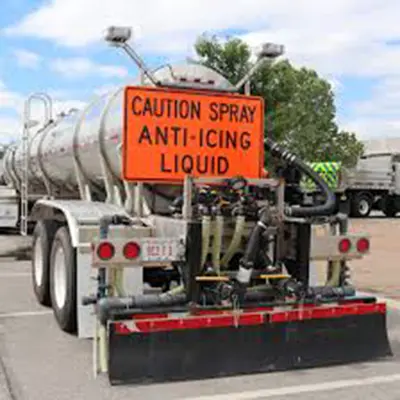
Applying brine before the storm works like putting oil on a skillet before you fry your food. Brine prevents a bond from forming between snow and the pavement so that plow blades can clear the roads more efficiently.
Sand or Traction
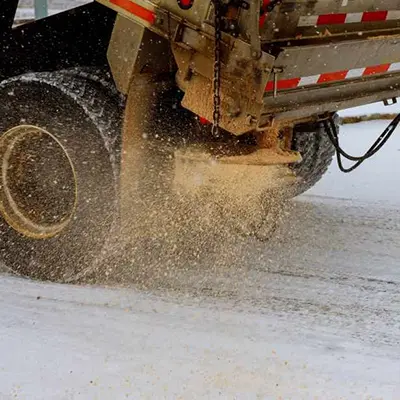
Mechanical means of removal is a proven strategy in salt reduction; getting snow off the pavement early and often is a sure way to avoid compaction and icy spots later on.
Calibration
Calibration should occur annually and any time a change is made to the equipment or the material. Municipalities and companies have reduced salt use by 50% by calibrating their equipment.
- Calibrated regularly to ensure the correct amount of salt is being applied
- Adjusted for road and weather conditions
Tips for calibrating equipment can be found on the Salt Smart website.
Snow Piles
Snow should be piled. Locations should be established ahead of time. Make sure:
- Melting snow drains away from traffic areas
- It does not cover a storm drain
- Away from stream banks and stormwater BMPs